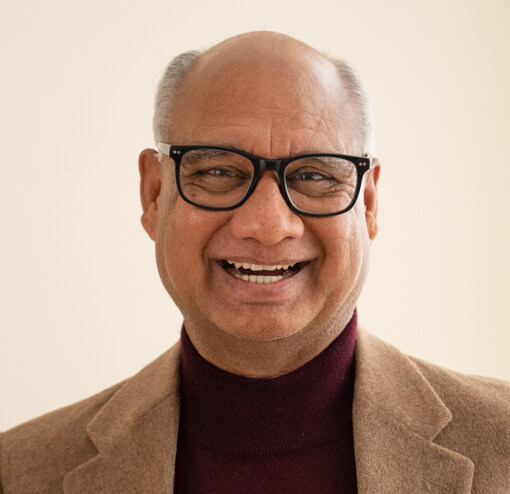Q: What is meant by the term kundalini awakening? And is this something we can and should aspire to in the course of our sadhana?
A: Kundalini, prakriti, maya, atma shakti, svarupa—these are all terms for the immense potential lying dormant in each of us. Kundalini awakening means self-awakening—experiencing our highest self. Kundalini awakening occurs in tandem with identifiable physical and psychological signs and symptoms in our body, breath, and mind leading to a peaceful experience. When the same thing happens in a smooth, peaceful manner due to contemplation, self-understanding, and meditation, it is called self-realization. All of these terms—kundalini awakening, self-realization, kundalini realization, and self-awakening—refer to the same phenomenon.
Kundalini awakening means self-awakening—experiencing our highest self.
So how does kundalini awakening happen? As the Yoga Sutra tells us, it arises through various means: janma-aushadhi-mantra-tapah-samadhi-jah siddhayah (YS 4:1). This experience comes to some naturally—by janma, or birth. To some it comes through aushadhi, or herbs. It comes to some through mantra shakti. To some it comes through extreme tapas, or austerity. And to others this awakening comes through samadhi—samadhi preceded by dhyana, dharana, pratyahara, and the other limbs of yoga. For those yogis who are inclined toward hatha yoga, kundalini awakening often comes through tapas, the best form of which is pranayama. There is no tapas as effective, safe, and straightforward as pranayama. And many yogis have experienced kundalini awakening through rasayana, or alchemy, where herbs are used in combination with a variety of precise alchemical practices.
It is important to understand that kundalini awakening is not unusual—it is actually occurring all the time. In fact, it is due to a certain degree of awakened kundalini shakti that we were born as a human being. All humans are equipped to experience self-realization. However, because some individuals are naturally much more inclined toward their inner journey than others, some of us have to make more of an effort to gain this experience.

Most of what you may have heard about kundalini awakening is quite mechanical and can take you only so far. In fact, much of what is commonly known as kundalini yoga is actually a form of hatha yoga that combines asana, pranayama, bandhas, and mudras without incorporating the yamas, niyamas, meditation, and Ishvara pranidhana. When this technique-oriented kundalini yoga is practiced without a spiritual touch, it often has more side effects and shortcomings than benefits. Many yogis have harmed themselves by practicing purely mechanical forms of kundalini yoga, especially when the techniques aren’t grounded in time-tested, rigorous fundamentals that include cultivating a healthy body, serene breath, and a calm, tranquil mind.
When asana, pranayama, bandhas, and mudras are combined with the yamas, niyamas, meditation, Ishvara pranidhana, tapas, herbs, and rasayana, a much more evolved aspect of kundalini yoga emerges—an aspect unique to Sri Vidya tantra. In this respect, tantra vidya is the most refined form of kundalini yoga.
Kundalini awakening is not unusual—it is actually occurring all the time.
In our tradition, we emphasize a balanced approach toward awakening ourselves. This includes keeping ourselves healthy and energetic with nourishing food and a well-regulated lifestyle (what the Bhagavad Gita calls yukta-ahara-vihara): waking up and going to bed at the right time, exercise, quality herbs, the right way of thinking, and making the best use of all the wonderful shaktis which nature has deposited in our nervous system. We combine all of this with mantra sadhana. This integrated effort is the specialty of Sri Vidya–oriented tantra, and this is what leads to true kundalini awakening—the experience of our highest self.
Source: Khajuraho Sadhana Immersion Q&A (Khajuraho, 2017)
